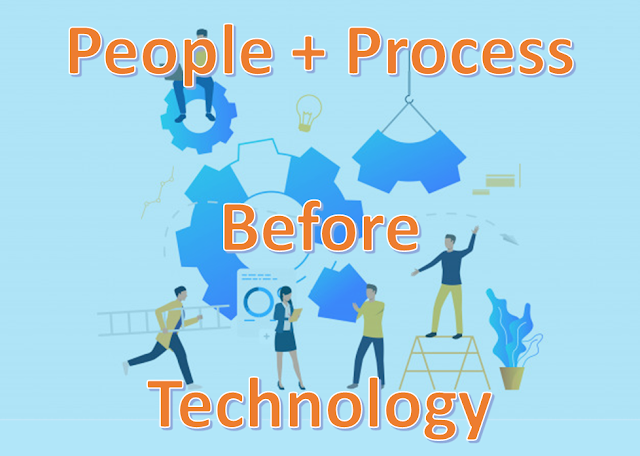WFM People and process before technology
In my daily WFM Tip7 (http://bit.ly/2kyHqn8) I wrote
People and process before technology. Technology is an enabler for quicker and more accurate plans, but true workforce planning is a business process not a technology solution. ROI on WFM technology investment will only be achieved through robust workforce planning processes and methodologies and sound people skills (both soft and technical).
I wanted to expand on this a little further….
Although common business operations have three dimensions: people, process and technology, many
organisations, when they embark on transformation, choose to lead with the implementation of technology. This is often also the case in workforce management practice, when either it does not formally exist at all or it is deemed to be broken, with the implementation of a WFM system often being seen to be the solution entirely.
In my experience, a pure technology-led effort to implement centralized workforce management practice often poses the threat of becoming overly technology centred, not only resulting in low acceptance of the WFM system itself but more importantly undesirable operational change that has wide reaching impacts on the health of employee or customer outcomes, as the operation attempts to deliver on signed up Return on Investments (ROI) that was “gestimated” to pay for the software solution.
This is in contrast to my belief that workforce management practice transformation should be a structured and well thought through process & people related effort that can achieve early benefits through relatively low-key technology such as excel alone. A simple, yet practical workforce management process framework, links operational and performance planning to business strategy
through a set of performance metrics, improvement initiatives and feedback loops. For example a basic Capacity Plan built in excel that right sizes an operation will instantly deliver benefit either through cost efficiency or improved customer experience but only if it linked correctly to business strategy outcomes and people culture it is aligned to deliver change to.
Having stated the significance of a foundation of process and people before technology it would be ill-considered to discard the importance of technology to deliver world class workforce management practice. The implementation of a WFM system will bring improved agility of action, improved accuracy in forecasting, greater sophistication in scheduling technique, and better communication channels that are instantaneous on workforce management related metrics. Then the new breed of AI driven automated WFM that can be layered on top will bring ever more value and agility in a similar space.
The key words here are “improved”, “greater”, & “better” which build on an already sound foundation of people and process.
Lastly as process and people culture wrap around a technologies functionality an additional yet often forgotten benefit or drawback is it will also bring about process entrenchment. This is both a good or a bad thing depending upon whether the people/process foundation was sound in the first place.
So when I am saying People + Process before technology I am saying is important not to harbor an illusion of inherent and imminent value coming from implementing WFM technology without first correctly aligned people culture and workforce management process.








Responses